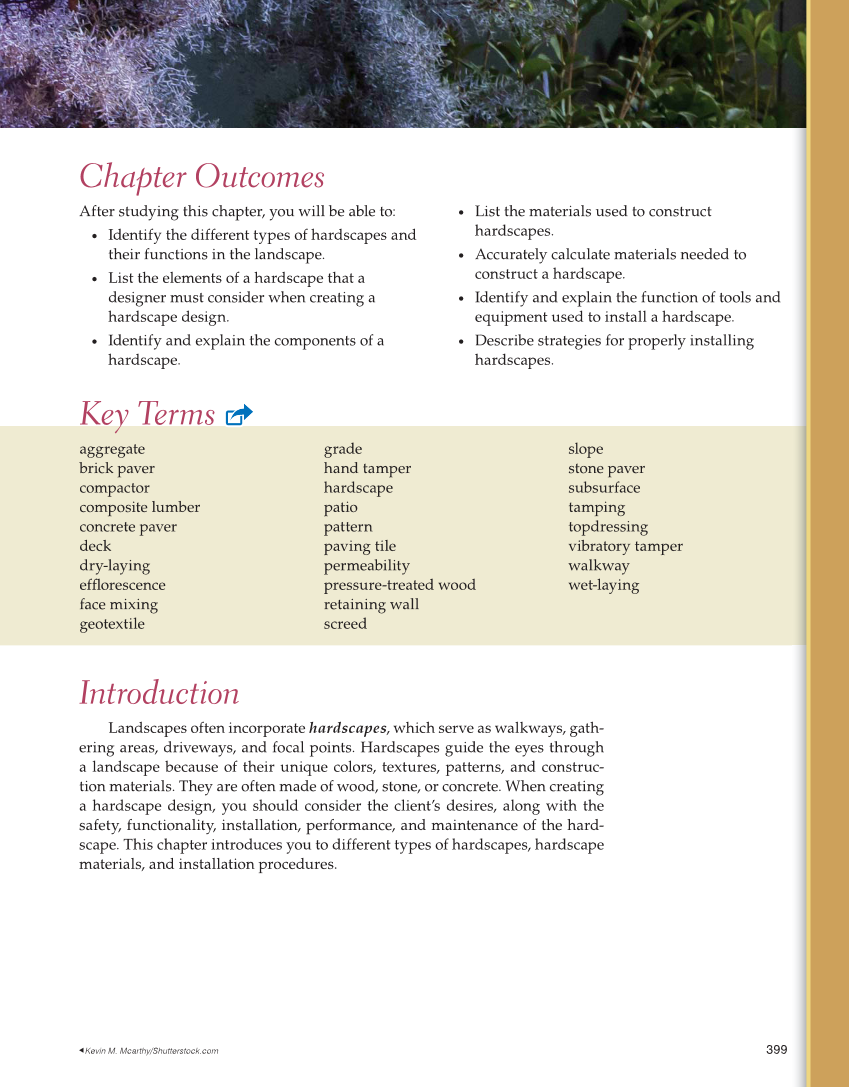399 ▲ Kevin M. Mcarthy/Shutterstock.com Chapter Outcomes After studying this chapter, you will be able to: • Identify the different types of hardscapes and their functions in the landscape. • List the elements of a hardscape that a designer must consider when creating a hardscape design. • Identify and explain the components of a hardscape. • List the materials used to construct hardscapes. • Accurately calculate materials needed to construct a hardscape. • Identify and explain the function of tools and equipment used to install a hardscape. • Describe strategies for properly installing hardscapes. Key Terms aggregate brick paver compactor composite lumber concrete paver deck dry-laying effl orescence face mixing geotextile grade hand tamper hardscape patio pattern paving tile permeability pressure-treated wood retaining wall screed slope stone paver subsurface tamping topdressing vibratory tamper walkway wet-laying Introduction Landscapes often incorporate hardscapes, which serve as walkways, gath- ering areas, driveways, and focal points. Hardscapes guide the eyes through a landscape because of their unique colors, textures, patterns, and construc- tion materials. They are often made of wood, stone, or concrete. When creating a hardscape design, you should consider the client’s desires, along with the safety, functionality, installation, performance, and maintenance of the hard- scape. This chapter introduces you to different types of hardscapes, hardscape materials, and installation procedures.
